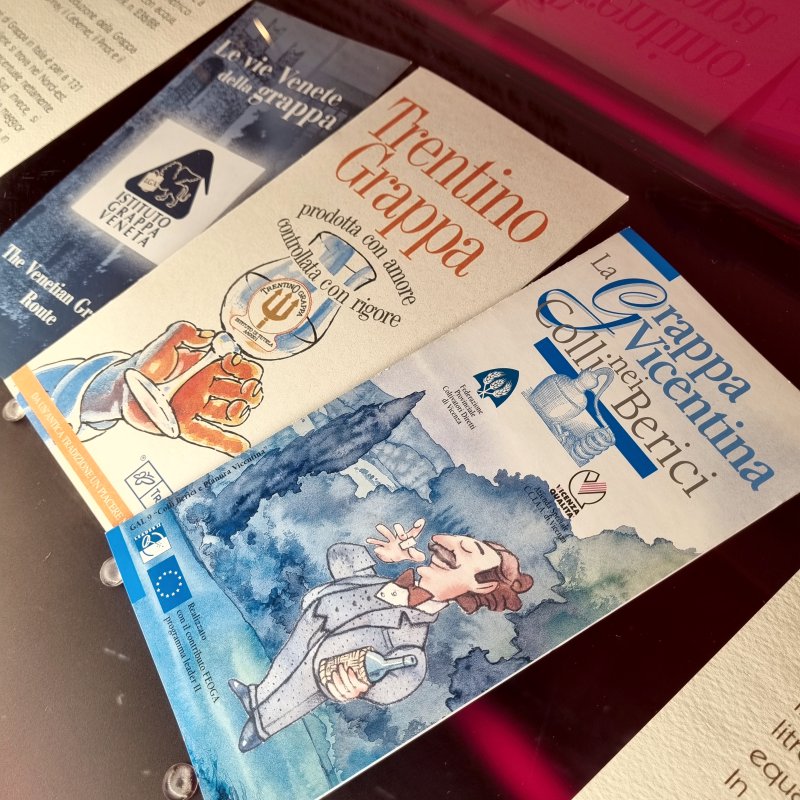The evolution of Grappa consumption
Today, Grappa consumers are increasingly inclined towards conscious and moderate tasting, unlike other beverages such as beer, cocktails, or wine, which are more easily accessible due to their lower alcohol content. This trend reflects a growing interest in quality over quantity and implies a measured approach to tasting.
In Italy, adults who consume Grappa number around 8 million, accounting for 16.9% of the population aged between 18 and 79 years old. This consumer segment has nearly doubled since 1990, but with an increasingly quality-oriented orientation. While "heavy consumers" show no significant increases in weekly consumption, "medium" and "light" consumers are on the rise, tasting Grappa on average three times a month. This change is also highlighted by the entry of younger consumers, aged between 25 and 35 years old, underscoring a generational evolution of the Grappa consumer.
The Evolution of Grappa's Image
Over the past thirty years, the perception of Grappa has changed radically, shifting from being considered a rough and strong spirit, predominantly male, to a product with a softer and more accessible perception. This change has been accompanied by a decrease in the average alcohol content, which now stands at around 40% ABV instead of the previous 50-60% ABV, making tasting more appealing even to occasional consumers.
Grappa has also attracted a passionate female audience, who have become increasingly interested in the world of high-quality wines and spirits, reflecting a trend of openness and diversification of tastes in the spirits market.
In Italy, adults who consume Grappa number around 8 million, accounting for 16.9% of the population aged between 18 and 79 years old. This consumer segment has nearly doubled since 1990, but with an increasingly quality-oriented orientation. While "heavy consumers" show no significant increases in weekly consumption, "medium" and "light" consumers are on the rise, tasting Grappa on average three times a month. This change is also highlighted by the entry of younger consumers, aged between 25 and 35 years old, underscoring a generational evolution of the Grappa consumer.
The Evolution of Grappa's Image
Over the past thirty years, the perception of Grappa has changed radically, shifting from being considered a rough and strong spirit, predominantly male, to a product with a softer and more accessible perception. This change has been accompanied by a decrease in the average alcohol content, which now stands at around 40% ABV instead of the previous 50-60% ABV, making tasting more appealing even to occasional consumers.
Grappa has also attracted a passionate female audience, who have become increasingly interested in the world of high-quality wines and spirits, reflecting a trend of openness and diversification of tastes in the spirits market.
The Perception of Grappa
Recent studies have shown that consumers are able to distinguish Grappa from other spirits from the first scent, confirming its olfactory and aromatic uniqueness. Despite this complexity, many consumers find it difficult to describe Grappa accurately, leading to the creation of training courses on tasting the spirit.
Consumed slowly and in moments of listening to the spirit, Grappa finds space in domestic settings, restaurants, and wine bars. This approach to the Italian spirit indicates that it is increasingly tasted far from any form of excess, finally being able to express its original elegance to a growing audience of enthusiasts from all over the world.
The future of Grappa therefore seems to rest on solid foundations, but much still needs to be done to make its ancient tradition and history known. Certainly, it is now possible to affirm that when it comes to Grappa, one is talking about Italy, a millennia-old history, and a beverage that continues to conquer new admirers with its elegance and complexity.
Consumed slowly and in moments of listening to the spirit, Grappa finds space in domestic settings, restaurants, and wine bars. This approach to the Italian spirit indicates that it is increasingly tasted far from any form of excess, finally being able to express its original elegance to a growing audience of enthusiasts from all over the world.
The future of Grappa therefore seems to rest on solid foundations, but much still needs to be done to make its ancient tradition and history known. Certainly, it is now possible to affirm that when it comes to Grappa, one is talking about Italy, a millennia-old history, and a beverage that continues to conquer new admirers with its elegance and complexity.



